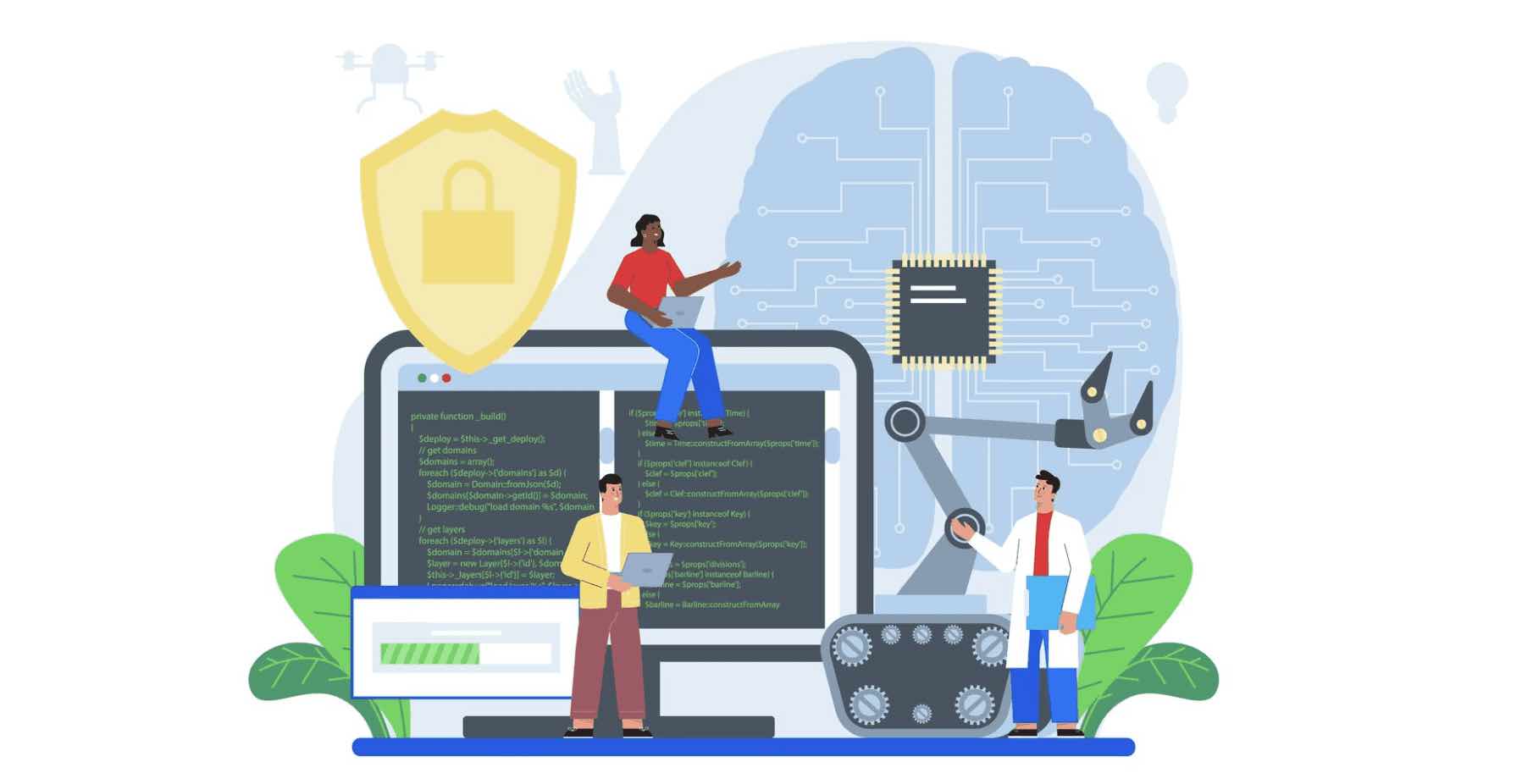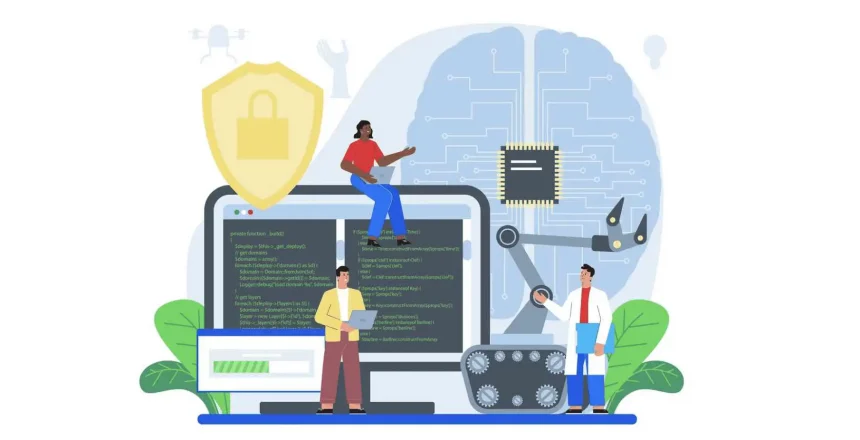
Introduction
Recent advancements in the field of artificial intelligence (AI) have sparked a new debate in the tech world: are humans smarter than AI? With AI ingraining itself into every aspect of our lives, from entertainment to transportation, it’s no surprise that this question is on everyone’s mind. Some people are worried about AI’s potential to take over jobs previously done by humans. Others are optimistic that AI can help us make more informed decisions and improve our lives.
So, how do intelligent machines compare to human intelligence? Can AI ever achieve true understanding, or is it limited to carrying out specific tasks with predetermined instructions? This blog post will explore AI’s capabilities and discuss whether humans are smarter than AI.
Also Read: Can AI and Machine Learning Simulate the Human Brain?
Are Humans Smarter Than AI? As of Now.
Let’s get one thing out of the way. Most people believe humans are still smarter than AI, at least for now. Our biological survival functions and the ability to reason have given us a huge advantage over machines. We can do things AI cannot, such as comprehending complex emotions and thinking abstractly.
That being said, these cognitive functions have evolved over roughly 100,000 years, a fraction of the evolution time scale. Everything we know is based on human experience, such as finding food and socializing with others. Humans constantly learn, adapt, and change to survive in our ever-changing world.
That is a relatively slow process compared to how fast AI is advancing. AI has gone from a theoretical concept to an essential part of our lives in just a few decades. Today, we are beginning to see AI outperform humans in certain tasks. But does that mean AI will become smarter? Experts have different opinions on this.
Convergent vs. Divergent Thinking
One of the main concepts to understand when comparing AI and human intelligence is convergent versus divergent thinking. Cognitive intelligence isn’t limited to one or the other but a combination of both.
Convergent thinking is narrow and focuses on finding one solution to a problem. It requires the ability to recognize patterns or trends quickly and accurately. For example, if we ask you, “What is 63 times 10?” you would be able to answer quickly because it’s a closed-ended question with one definite answer.
Your brain would use convergent thinking to find the answer. What about “63 times 87?” While it might seem more complex to you, it is still a closed-ended question with one correct answer. AI excels at this type of thinking because it can be programmed to identify certain data points or combinations quickly and accurately.
On the other hand, divergent thinking is broader and involves coming up with multiple solutions to a problem. It requires creativity and the ability to think outside the box. If we ask you, “How can you solve world hunger?” it would require a different type of thinking than just giving one answer. We could compare convergent thinking to common sense while comparing divergent thinking to creativity.
Human sense is better than AI regarding divergent thinking because of our experience and understanding of the world. We can look at problems from different perspectives, while AI is limited to what it has been programmed with.
Human vs. Machine
Next, let’s look at the vessels of intelligence – humans, and machines. It’s no secret that our biological intelligence stems from our brains. Compared to other animals, our brains are larger and more complex. We can learn from past experiences, form memories, and recall them at a later time. We can also process new information quickly, react to events without hesitation and use language to communicate.
Our brains process information through the cerebral cortex, which consists of millions of neurons connected in networks. Nearly everybody has a similar brain structure, although those with a higher IQ tend to be slightly different. The bottom line is that we process information at roughly 60 bits per second, based on the average speed of a neuron. Our biological makeup sets this speed, which limits us in some ways.
Conversely, AI works differently from our brains. AI is only limited by its hardware, which is much faster than the human brain. AI can process information billions of times faster than us, enabling it to make decisions quickly. In a purely convergent manner, that makes it many times smarter than us in certain tasks.
What AI doesn’t have, though, is the synergy of biological intelligence. The human brain uses the multiple parts of the cortex simultaneously, enabling us to process complex tasks. AI can only do one task at a time, meaning it can’t solve the same problems that we can.
The Human Thought Process
Human intelligence can be split into three main components – knowledge, reasoning, and creativity. Knowledge is our understanding of the world around us and how to interact with it. Reasoning allows us to think logically and use that knowledge in decision-making. Creativity helps us develop new solutions or ideas based on what we already know.
Video games are a great example to illustrate the difference between AI and the human thought process. You would have countless ways to complete an open-world game with one main objective and many side quests. You might decide to complete the side quests first to level up and make the main quest easier, or you might decide to explore the game world, uncover secrets and get special items to help you along the way.
The Machine Thought Process
No matter how complex, machines mostly rely on convergent thinking. AI systems are designed to look at data points and events, analyze them and come up with a certain action or solution. This means that machines can only act based on the data they receive, leaving little room for creative solutions or divergent thinking.
Most machines use brute force algorithms, meaning they will analyze every single possible outcome and then select the one that gives them the best result. This approach has its advantages and disadvantages. On the one hand, it can help machines develop solutions quickly and accurately. But on the other hand, it means that machines are limited to analytical thinking instead of coming up with innovative solutions or ideas.
Returning to the video game example, a machine could not adopt creative gameplay or strategies to complete the game. It will mostly rely on trial and error, using the same strategy repeatedly until it finds one that works. Not very exciting, right?
So, Which Method is More Intelligent?
That answer is in the eye of the beholder. Do you value convergent intelligence over divergent intelligence? Do you think analytical thinking is more important than creative solutions? These questions are up to the individual, but one thing is certain: both humans and machines have strengths and weaknesses in intelligence.
However, one could argue that since humans are the ones who create and design AI systems, then humans are more intelligent than machines. After all, we have the creativity to write algorithms and code that can be used to make machines smarter. The question remains: does the student become the teacher or vice versa?
The debate between human intelligence and AI intelligence is an ongoing one. At the end of the day, both have their place in our society, and each brings something to the table. What matters most is how we utilize these two forms of intelligence and channel them toward achieving common goals.
We could consider situational intelligence to be the deciding factor in this debate. Understanding when and how to use AI or human thought processes to make a specific problem easier is what sets us apart from machines. Knowing which will give us the best result will always be key in this conversation.
Machine Learning: Effective Everyday AI
With that in mind, it’s essential to understand the impact of machine learning in our everyday lives. As technology evolves and machines become more adept at analyzing data, they can create solutions quicker and more efficiently than ever before.
Machine learning is a subfield of AI that focuses on using algorithms to learn from data and make predictions. This technology is used in many areas, such as self-driving cars, medical diagnostics, facial recognition, and more. As machines become smarter and more capable of learning, the potential applications are vast.
Patterns & Inference
Deep learning, for example, is a type of machine learning algorithm that can be used to accomplish complex tasks such as image recognition or natural language processing. It uses multi-layered neural networks to analyze data and make predictions with unparalleled accuracy. Reinforcement learning is another algorithm that teaches machines to learn from their mistakes and optimize their behavior.
The top-down and bottom-up approaches to AI are also common in machine learning. The former is a supervised learning approach that uses predetermined data sets to teach machines. Meanwhile, the latter is an unsupervised learning technique that lets machines explore their environment and draw conclusions from experience.
The conceptualization of intelligence is based on recognizing patterns and drawing inferences from them. Humans can do this instinctively, but machines must be taught through code or algorithms. As machines become more advanced, they may make better decisions based on their observations.




